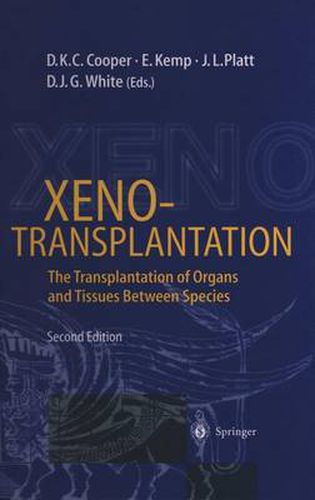Readings Newsletter
Become a Readings Member to make your shopping experience even easier.
Sign in or sign up for free!
You’re not far away from qualifying for FREE standard shipping within Australia
You’ve qualified for FREE standard shipping within Australia
The cart is loading…






This title is printed to order. This book may have been self-published. If so, we cannot guarantee the quality of the content. In the main most books will have gone through the editing process however some may not. We therefore suggest that you be aware of this before ordering this book. If in doubt check either the author or publisher’s details as we are unable to accept any returns unless they are faulty. Please contact us if you have any questions.
This is a time ofexcitement and progress in the field ofxenotransplantation. The work described in this book traces the development of the science of cross-spe cies transplantation, summarizes the current state ofour knowledge, and focuses on approaches directed toward future clinical application. The important question is not whether xenotransplantation will succeed, but rather how and under what circumstances xenografts will provide predictable enough results to warrant clinical application. The fact that the best results to date in clinical xenografting were achieved over three decades ago should not be a matter of discouragement, but rather a stimulus to apply new approaches to this area of work. The shortage of human organs for transplantation is cited frequently as the driving force behind the increased interest in xenotransplantation. This shortage is an undeniable fact, but there are additional potential advantages of xenotrans plantation, such as the ability to schedule replacement surgery on an elective basis and the modification of animals, organs, and tissues to improve acceptabil ity in the human host. The advances in the basic science ofxenotransplantation outlined in this book give hope that the immunologic barriers to xenotransplantation will be overcome and that transplanted organs and tissues will succeed consistently in humans. However, if our experience with human allografts provides an analogy, we may anticipate that clinical progress in xenografts will be plagued by failures and rewarded by successes, often without a complete understanding of the mechan isms involved.
$9.00 standard shipping within Australia
FREE standard shipping within Australia for orders over $100.00
Express & International shipping calculated at checkout
This title is printed to order. This book may have been self-published. If so, we cannot guarantee the quality of the content. In the main most books will have gone through the editing process however some may not. We therefore suggest that you be aware of this before ordering this book. If in doubt check either the author or publisher’s details as we are unable to accept any returns unless they are faulty. Please contact us if you have any questions.
This is a time ofexcitement and progress in the field ofxenotransplantation. The work described in this book traces the development of the science of cross-spe cies transplantation, summarizes the current state ofour knowledge, and focuses on approaches directed toward future clinical application. The important question is not whether xenotransplantation will succeed, but rather how and under what circumstances xenografts will provide predictable enough results to warrant clinical application. The fact that the best results to date in clinical xenografting were achieved over three decades ago should not be a matter of discouragement, but rather a stimulus to apply new approaches to this area of work. The shortage of human organs for transplantation is cited frequently as the driving force behind the increased interest in xenotransplantation. This shortage is an undeniable fact, but there are additional potential advantages of xenotrans plantation, such as the ability to schedule replacement surgery on an elective basis and the modification of animals, organs, and tissues to improve acceptabil ity in the human host. The advances in the basic science ofxenotransplantation outlined in this book give hope that the immunologic barriers to xenotransplantation will be overcome and that transplanted organs and tissues will succeed consistently in humans. However, if our experience with human allografts provides an analogy, we may anticipate that clinical progress in xenografts will be plagued by failures and rewarded by successes, often without a complete understanding of the mechan isms involved.